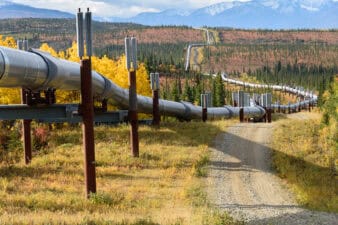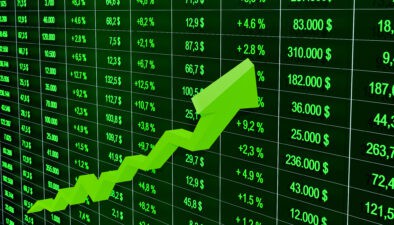Take Stock is the Motley Fool Canada’s free investing newsletter and is distributed weekly. This edition was sent to our followers yesterday. To have future editions delivered directly to you, simply click here now.
Dear Fellow Fools,
As far as I’m concerned, second-quarter earnings season can end anytime now.
A recent Globe and Mail piece indicated that about three-quarters of companies in the S&P/TSX Composite have reported thus far. More than half of them missed the Street’s sales estimates and about half missed the consensus earnings estimates.
It’s rough out there – and the Canadian market’s performance of late has certainly been reflective of these missed expectations. Over the past month, when the bulk of these reports came through, our market is down by 2%.
According to Capital IQ, there are 246 companies in the S&P/TSX Composite. 144 of them have declined by more than 2%. In other words, 58% of companies in the index are down by more than the broad market over the past 30 days!
And the picture gets worse if we zero in on the Energy sector. The much-maligned S&P/TSX Energy Sector is down by 4.1% in the past month, and down 15.1% since 2015 began.
Similar to the broad market, however, these results are also rather flattering.
Just ask the owners of companies like Baytex Energy, Pengrowth Energy, or Paramount Resources – companies that are down by 76.9%, 74.6%, and 71.8%, respectively, since the beginning of the year.
Another from the energy space that’s booked a significant decline since the price of oil began to dive in the second half of last year is widely held Crescent Point Energy (TSX:CPG)(NYSE:CPG). The company has booked a near-60% decline over the past 12 months.
However, thanks to a big dividend yield — something that only got bigger as the decline intensified — this is a company that has garnered a lot of attention during the decline. In correspondence with members within our Stock Advisor Canada advisory service, I can’t tell you how many times I’ve been asked whether or not Crescent Point’s dividend was sustainable.
And my answer was always the same.
I didn’t think Crescent Point’s dividend was sustainable at $100/barrel oil, let alone with the price now languishing below $50/barrel.
Turns out, I was right. Last Thursday, along with its second-quarter results, Crescent Point cut its monthly dividend from $0.23 down to $0.10.
In this edition of Take Stock, I’d like to illustrate why even this scaled back payout may not be sustainable, either.
Listen to the market
To be clear, I don’t necessarily mean to be picking on Crescent Point. In fact, though I’m really not a fan of how the company’s been managed, I own a very small position by way of a takeover it made earlier this year of Legacy Oil and Gas.
What we’re going to lay out here is a template that we think can be applied across the energy sector — as there are many in this same boat.
But since Crescent Point’s dividend cut is top of mind, let’s run with it.
Fools, there are a few ways to gauge whether a dividend is sustainable.
Perhaps the most efficient is by simply looking at the yield.
The market isn’t always right, but it’s not stupid. Anytime you see a yield in excess of 8%, there’s a chance something’s up with that company. And by “up” I mean that there’s a question mark on that dividend’s sustainability.
Before it was cut, Crescent Point’s dividend yield was 15.4%. That is the market’s way of saying, loudly and clearly, that the dividend is not affordable.
Like I say, though, the market’s not always right, so we need to be equipped with the tools to double-check the indications it gives us.
Follow the cash
Because dividends are paid out of a company’s cash, to check whether a dividend is sustainable, we must go straight to the cash flow statement – the most underappreciated of the three financial statements that company’s produce, in my opinion.
From there, a simple calculation is required to determine the company’s ability to cover its dividend.
You see, the magic figure you’re looking for is known as “free cash flow” – that is, the amount of cash a company has lying around after it’s paid out all of its obligations that surround actually running the business.
Free cash can be used for such shareholder-friendly things as reinvesting in the company’s growth, share buybacks or … you guessed it, dividends.
To calculate free cash, simply take cash from operations and deduct capital expenditures. It’s as easy as that.
If the number you’re left with is greater than the dividends paid out during that period, there’s reason to believe that dividend is sustainable.
There is one slight complication, however. We can’t get a true sense of a company’s ability to generate free cash by measuring just one period. Therefore, I suggest applying this calculation and comparison to several periods. The more periods you look at, the better sense you’ll have for the dividend’s sustainability.
For example
By looking at this one metric, free cash flow, and comparing it to the company’s dividend payout, it was clear to me, and has been for some time, that Thursday’s cut by Crescent Point was inevitable.
Check it out. Over the last five fiscal years Crescent Point generated combined free cash flow of negative $203.1 million. Dividend payers should NOT generate negative free cash flow!
However, even though it generated negative free cash, the company managed to pay out more than $3 billion in dividends. Truly, an astonishing feat!
So then, you ask, if the cash for the dividend didn’t come from the company’s operations, where the heck did this $3 billion come from?!
Sticking with the cash flow statement, the section labelled “Cash from Financing” holds the answer. I won’t bore you with the details, but over this period, the company issued $3.8 billion of equity and $1.4 billion of debt to ensure there was cash in the till to cover the dividend obligation.
Raising cash from financing activities to aid with a dividend payout is nothing more than a smokescreen, Fools. And as soon as a bump in the road is crossed, which is inevitable regardless of the industry, let alone one so dependent on the underlying commodities, the smoke tends to clear pretty quickly.
Bottom line
The message is this: If a company cannot cover its dividend with free cash flow, that dividend is potentially unsustainable. There are exceptions, of course, but generally speaking, that’s a rule of thumb to live by in the world of investing.
And I’ll reiterate, you can walk through almost the entire energy sector, especially the producers, and see this same dynamic play out over and over and over again. Don’t be small-f “fooled” by some of the tantalizing yields available!
To your wealth,
Iain Butler, CFA
Chief Investment Advisor, Motley Fool Canada
 Stock Up Sale
Stock Up Sale







